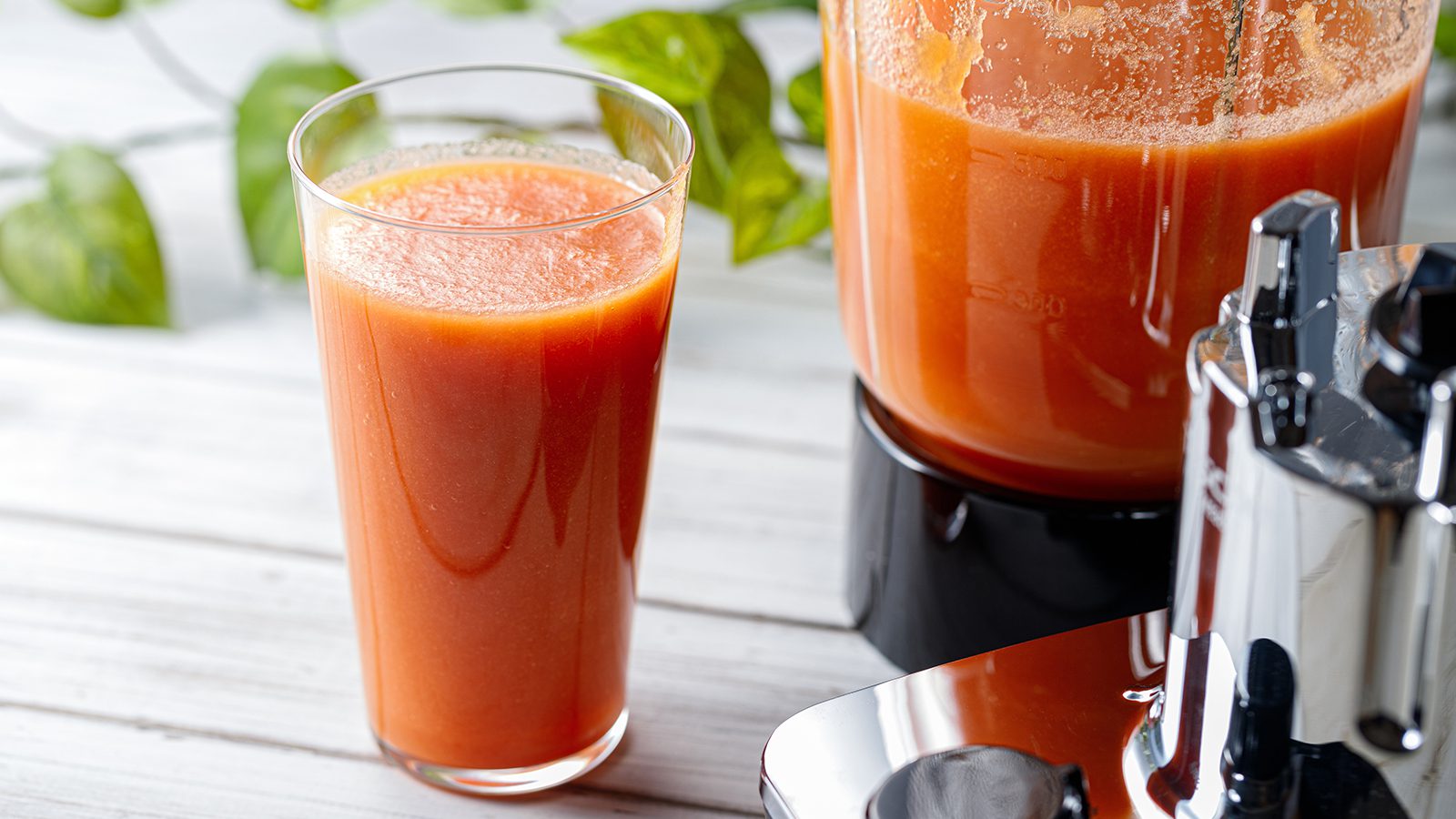Alkaline juice offers many health benefits and can lower the risk of diseases. Adopting a balanced diet with plenty of fresh, whole foods will improve health. However, proponents of the alkaline diet take this one step further.
They believe we’re not meant to digest acidic foods and should avoid them entirely. Alkaline foods, such as fruits, nuts, legumes, and vegetables, should account for most of our caloric intake. People who follow the diet say that by eating these foods, we can alter our body’s pH levels.
Simply put, pH measures the alkalinity or acidity of a substance on a scale from 0-14. Numbers below 7 represent an acidic substance, while those above 7 are alkaline.
When your body converts food into energy, it triggers a chemical reaction in your digestive system. According to proponents of the alkaline diet, the metabolic waste left behind from this process can affect your pH levels.
Also known as the acid-ash hypothesis, it claims that having acidic metabolic waste, or ash, can increase disease risk. On the contrary, alkaline ash will have a protective effect on the body.
Those who follow the alkaline diet suggest regular pH monitoring of urine to confirm it doesn’t dip below 7. However, pH levels vary widely throughout the body depending on diet and time of day. Therefore, urine pH doesn’t portray an accurate picture when it comes to health.
Few scientific studies have proven any benefits of an alkaline diet, but anecdotal evidence suggests it is at least worth a try.
One study found that eating a highly acidic diet could contribute to bone loss and calcium depletion. However, supplementing an acid-producing diet with a high calcium intake appeared to protect bones. Another research paper found evidence that a low-protein alkaline diet can slow the progression of chronic kidney disease.
The advantages of an alkaline diet appear from eating whole, fresh foods. It may have a minimal impact on pH levels but not enough to have substantial benefits. Still, drinking alkaline juice can improve your health since it contains bountiful nutrients. We’ll go over the recipe below.
The Alkaline Juice Recipe That Restores Health

An alkaline juice recipe should contain plenty of fresh fruits and vegetables since they have high alkalinity. Some of the most popular ingredients include citrus fruits, apples, watermelon, beets, and celery.
Many enjoy having leafy greens in their alkaline juice, such as kale, wheatgrass, Swiss chard, or spinach. You may add fresh roots like ginger, garlic, turmeric, or taro.
All fruits and vegetables have an abundance of antioxidants, vitamins, and minerals. Alkaline juice made with green vegetables and grasses also provides chlorophyll, an antioxidant that can boost energy levels. When making the juice recipe, use fruits and veggies in their raw form since cooking foods can deplete nutrients.
The recipe below contains fruits and vegetables that help increase alkalinity and oxygen in the body. Make the recipe as often as possible to help balance pH levels. However, keep in mind that alkaline juice doesn’t store well, so only make enough for one serving. If you have leftovers, you can always blend them with other ingredients to make a salad dressing or smoothie.
Ingredients
- 2 carrots
- 1 small cucumber
- 1 cup kale or spinach
- 1/4 an apple
- ½ lime
- 1-inch piece of ginger
Directions
- Peel the ginger and apple before placing them in the juicer. Cut the lime and remove any seeds. Add all ingredients to your vegetable juicer one at a time and begin juicing.
- Pour into a glass and enjoy!
- If you don’t have a juicer, you can always add the ingredients to a blender. Just add water to create a juice consistency, then remove the leftover fiber using a mesh strainer.
The blended alkaline juice should have a bright orange color from the carrots. Remember that you can substitute any fruits or vegetables you prefer. You’re investing in your health if you consume fresh, whole foods.
BONUS: Two More Alkaline Juice Recipes Could Boost Your Immune System
Now that you know how tasty and healthy it is, try these alternatives:
Apple, Celery, and Parsley Juice
This alkaline juice contains high antioxidant levels from apples and celery. This helps prevent free-radical damage, boost the immune system, and reduce inflammation. Also, apples and celery can improve digestion since they have plenty of fiber.
Parsley offers many essential vitamins and minerals, such as Vitamins A, C, and K. The powerful herb also contains anti-fungal and antibacterial properties, making it a great addition to alkaline juice!
Ingredients to make the juice:
- One apple
- Four celery stalks
- One parsley bunch, including stems
Mango, Orange, and Strawberry “Mocktail” Alkaline Juice
Many adult beverages contain these fruits, but you can still enjoy them without the alcohol! This mocktail contains nutrients such as Vitamins A, C, and E, folate, and iron. Also, they have high fiber content, which improves digestion and lowers blood pressure.
Ingredients required for this alkaline juice:
- One frozen mango
- 1/2 cup orange juice
- Ten frozen strawberries
- Two tablespoons of lime juice
- Ice
To make this juice, allow the frozen fruits to thaw for about 30 minutes to one hour. Next, add all the ingredients to a juicer, then pour into a glass over ice. If you want to lower the sugars in this recipe, simply swap greens for the mango. Strawberries and oranges have a lower glycemic index, making them ideal for anyone on a low-sugar diet.

Final Thoughts on Eating an Alkaline Diet
Why not juice if you find it challenging to eat enough fruits and vegetables? The body absorbs the micronutrients more efficiently through juicing and provides an easy way to meet nutritional needs.
Alkaline juices that include dark, leafy greens and fresh herbs can help balance pH levels while keeping blood sugars low. If you have insulin resistance or diabetes, you should opt for more greens and fewer fruits.
Hopefully, you will enjoy these healthy alkaline juices that detoxify the body and improve overall health. If you make these, let us know your favorite in the comments!

















